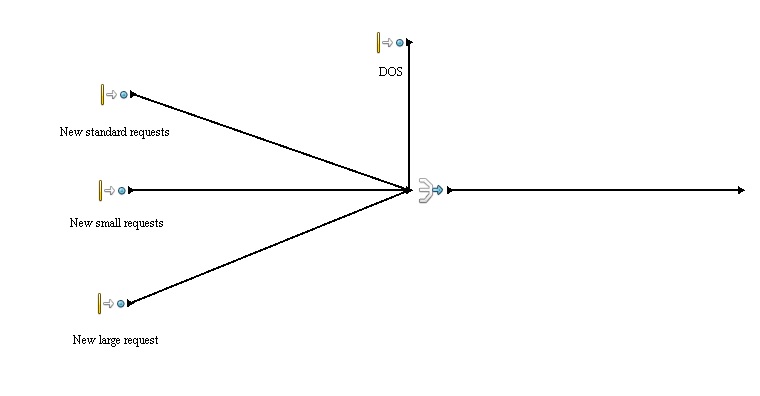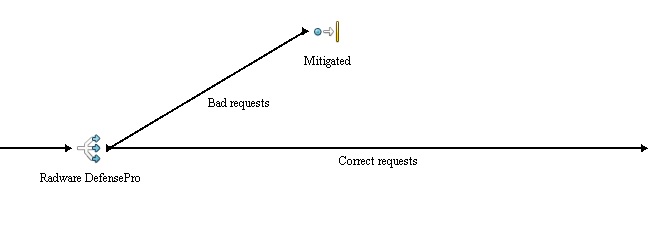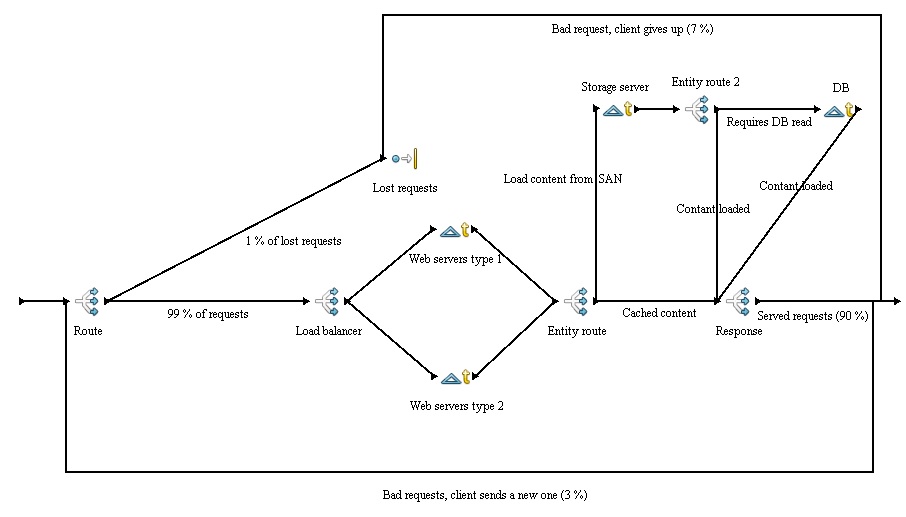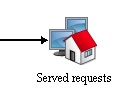Load-balancing
- Project name: Load-balancing
- Class: 4IT496 (WS 2015/2016)
- Author: Bc. Patrik Tomášek
- Model type: Discrete-event simulation
- Software used: SimProcess, trial version
Contents
Problem definition
A hosting company with it’s own infrastructure is using so called "load balancing" to distribute the overall load between multiple servers (hardware) and “high-availability” to minimize service down-time.
Load-balancing
short text here
High-avaibility
Ensures that a system or component is operational for desirable time. The solution necessary to provide web hosting consists of many parts, where all of them need to be on-line for the whole to be operational.
To enable HA a provider can use failover and backups. Failover is basically a backup piece of hardware, which ensures that when a component goes off-line another takes it’s place. After that it’s necessary to load the backup on the component that took over. If there is a SAN (storage area network) implemented than there is no need to load a backup, because failover just uses the same data from one central storage, which is used for all the server nodes.
Anti-DoS/DDoS
short text here
Method
SIMPROCESS
Model
Entities
Small request
text
Standard request
text
Large request
text
D-DoS
text
Resources
Load-balancer
text
Web server
There are two types of this resource, each with different capabilities:
Type 1
Type 2
Storage server SAN
text
Database server
text
Radware DefensePro
text
Processes
HTTP requests




